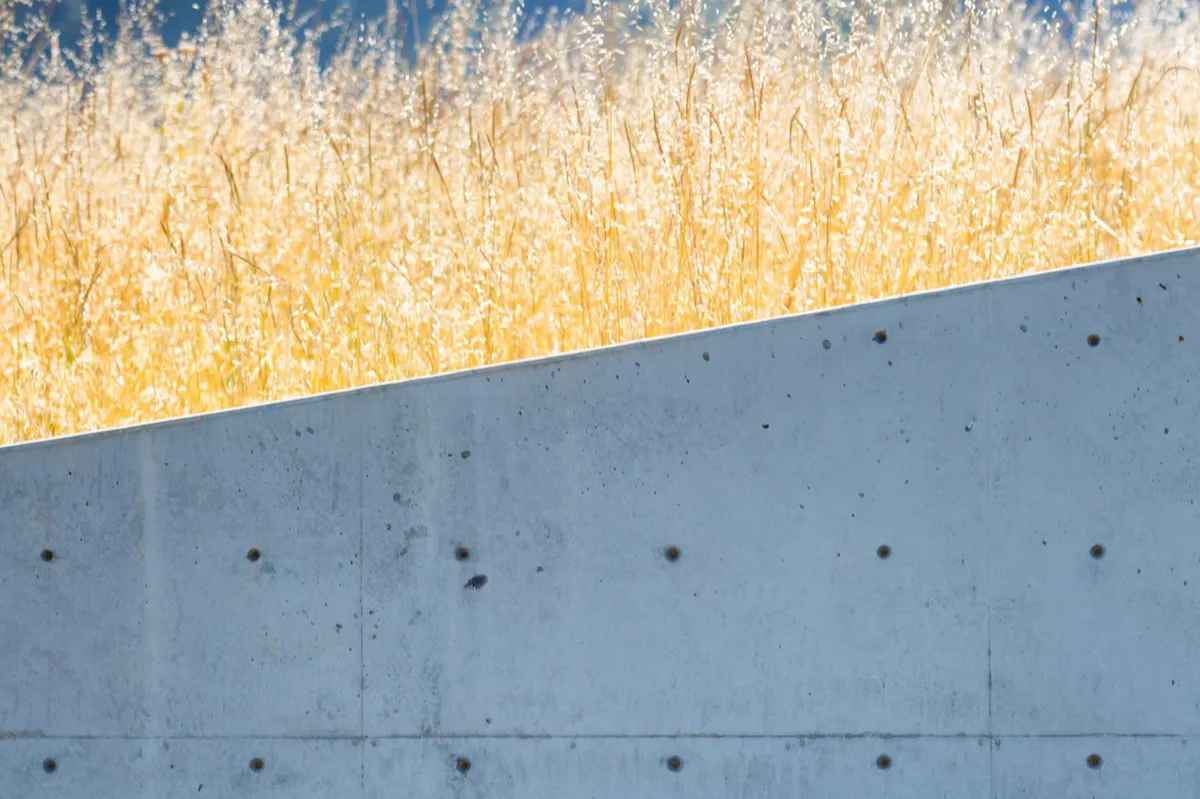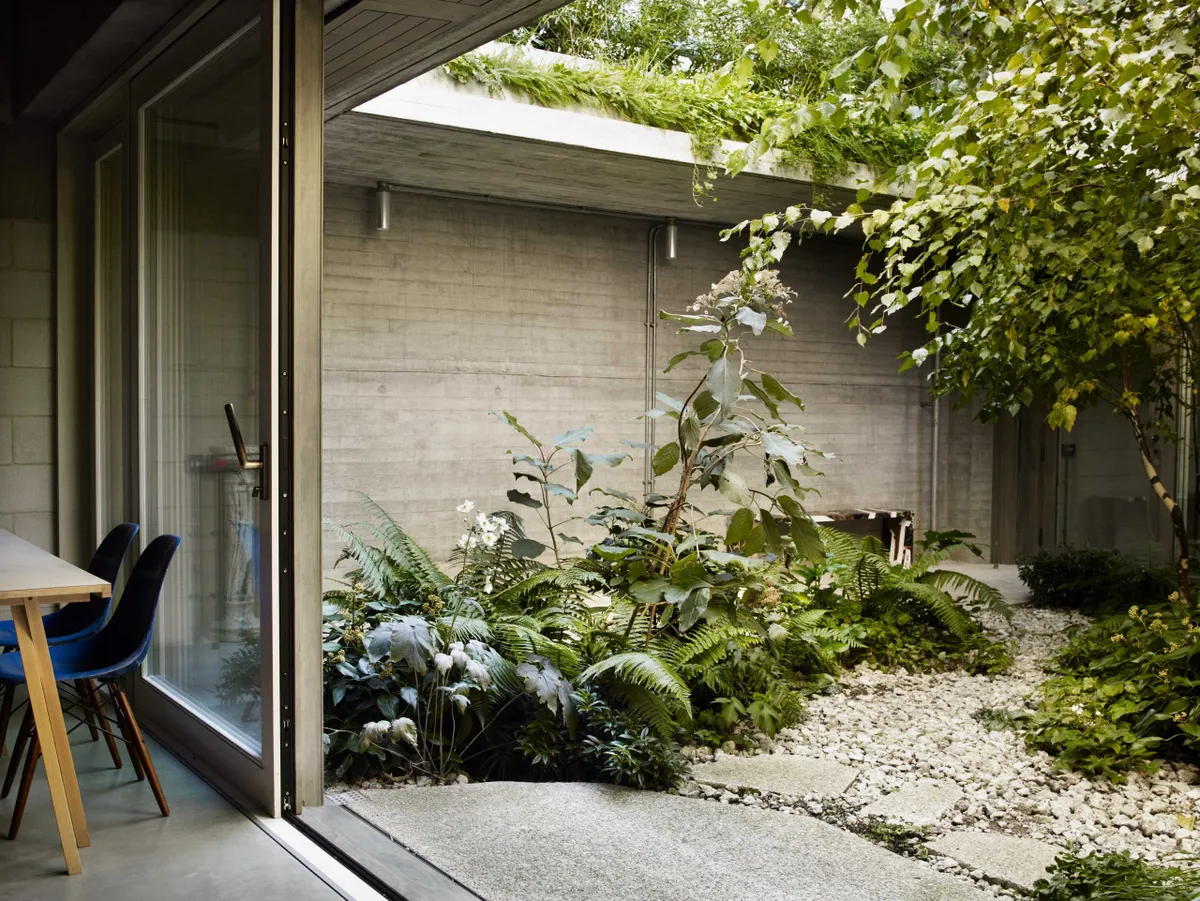Concrete has had bad press in recent years due in part to its overuse by mediocre post-war architects and also because of that strange pattern imprinted concrete, which people inexplicably put on their driveways a decade or so ago. But concrete is far from being a modern material – it was used as far back as the 2nd century for the Pantheon in Rome – and is now enjoying something of a revival thanks to its incredible versatility and, if executed well, incredible beauty.
You might also like
Polished concrete is hugely popular internally but has drawbacks outside as it can become too slippery when wet but it is possible to use it if you have an experienced contractor who applies the correct finish. Its main attributes are the ability to cover large areas without the joins of tiles or slabs and it has
a rich, warm patina rather than an even flat colour. A good alternative is microcement, which is something of a new wonder product as an external finish. It can look just like a polished concrete but is applied in only a 2-4mm thick layer, uses only a small amount of water and raw material and is also quick drying. The drawbacks are that it has to be applied to a solid sub base, such as an existing concrete patio, for example, and any cracks or movement will be transferred into the microcement and exposed, although it can be repaired, which is a plus. I think its best uses are probably on walls or even, as it is waterproof for lining ornamental pools. If the pool is deep enough then the grey colour of the cement actually gives the water a pleasing greeny blue colour.
Casting concrete in situ is useful if you have limited access and can’t bring in huge pieces of stone or pre-cast concrete. A beautiful, smooth, fair-faced wall requires a great deal of skill but this can also be a low tech, inexpensive operation: reminiscent of the recently renovated Brutalist buildings on London’s South Bank, a simple concrete retaining wall can be brought to life by the wood grain of the timber shuttering used to build it.
Clean lines

Large cast panels of fair-faced concrete are a practical solution for forming free-tanding or retaining walls for terracing a garden. Here they make a clean and contemporary backdrop for the architectural forms of the Dianella revoluta planted in front.
Peter Zumthor’s award-winning concrete house in south Devon takes this to another level and is constructed in layers of ‘rammed’ concrete, built one layer a day so that the end result shows the joins that give the walls all the beauty of rammed earth but are long lasting and will weather well without needing much in the way of maintenance. As a backdrop to a contemporary planting scheme it is sublime and remarkably easy to achieve.
On the horizonatal plane, huge dramatic ‘slabs’ and steps can be cast in sizes and shapes that would never be possible in stone. Planting between these slabs is a good idea to eliminate the need for unsightly expansion joints and cement dyes can be used to manipulate colours. At Dan Hinkley’s garden in the Pacific North West, I’ve also seen iron filings put into the surface to give a warm rusty glow.
Casting in situ is also useful for making outdoor kitchens and worktops allowing bespoke sizes and shapes and can be sealed to make a hygienic wipeable surface.
Landscape link

Australian designer Bernard Trainor’s work in California often uses concrete and, here at Big Sur, he has used retaining walls that wind through the garden creating a visual connection with the organic forms of the natural landscape beyond.
Pre-cast slabs for paving used to be mainly poor attempts at faux stone. Now, however, there are some excellent products that don’t pretend to be something they are not but celebrate the beauty of concrete and range from almost white to almost black through browns and terracotta with special step units and copings, which are like a kit of parts and easy to work with.
Second life

Concrete can be recycled on site instead of being taken to landfill, as in this courtyard garden by Dan Pearson. Crushed and used as a path, it visually connects the garden back to the new buildings and acts as a mulch keeping weeds down and moisture in the soil.
Allegedly, concrete is the most widely used material on earth and there has been much debate about its environmental credentials. It takes a lot of energy to make the cement it contains so the end result is that concrete has quite a chunk of embedded carbon but this can be justified in part because it lasts for such a long period of time. Another argument in concrete’s favour is that its raw materials – the sand and cement – are often relatively local compared to importing stone from many miles away or even from overseas so this keeps the carbon footprint comparatively low. There are also low-carbon cements in existence but they haven’t found their way into the market yet.
Existing concrete can also be recycled and reused within a garden. This not only saves on cost but also helps to reduce landfill. If old walls, paving or even buildings are being demolished they can be broken up and used in gabion wire baskets stacked together to form walls. The concrete itself can
be used as the facing material or hidden behind a thin façade of a more attractive stone. I have also used crushed concrete as a mulch but you have to be careful to choose the right plants as it will leach lime into the soil and play havoc with the pH.
Andy Sturgeon is an internationally renowned landscape and garden designer. He is the winner of eight Gold medals at the RHS Chelsea Flower Show, including Best in Show in 2019. andysturgeon.com